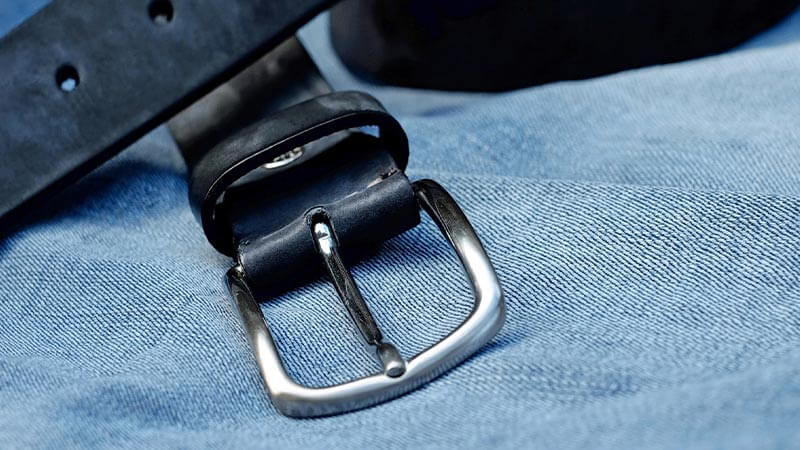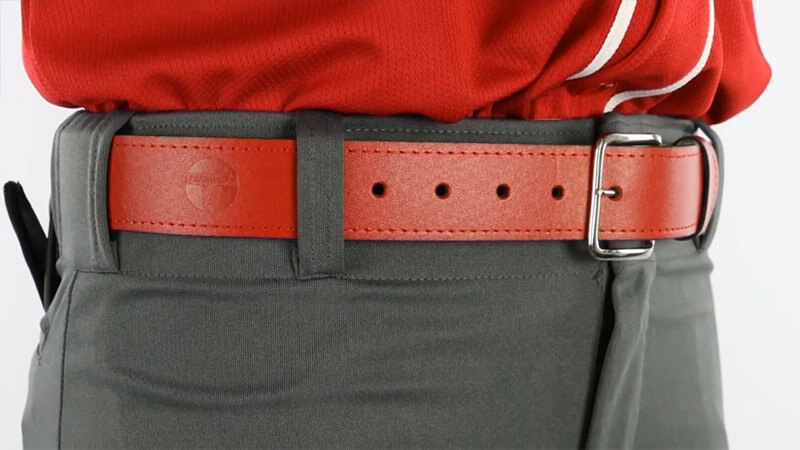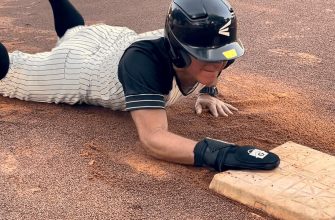Baseball belts, sometimes referred to as elastic belts or uniform belts, are an important accessory often worn by baseball players. The belts are designed to hold up the players’ uniform pants to ensure a proper fit around the waist and hips. Without a belt, the pants could sag or shift as players run, slide, and move aggressively on the field.
Over time, baseball belts can stretch out and become loose. A loose belt defeats the purpose of holding the pants securely in place. Players may have to stop to hike up their pants or adjust the belt, which could disrupt their focus. A properly tightened belt allows complete freedom of movement without any restriction or distraction.
Tightening a loose baseball belt is a quick and easy process, but it’s important to get the fit just right. The belt should feel snug but not overly tight. The steps below outline how to properly tighten a baseball belt for ideal comfort, performance and uniform appearance.
Assess if the Belt Needs Tightening

The first step is to assess whether your baseball belt actually needs tightening in the first place.
Look for key signs that your belt may be too loose, such as:
- The belt slips down as you run or make quick movements on the field.
- The belt feels loose around your waist when you are at-bat or playing your position.
- You have to repeatedly hike up or adjust the belt during games or practice.
- There is a jangling sound from the loose belt as you move around.
If you notice any of these signs, it’s a good indication that you need to tighten your baseball belt for better comfort and performance. A properly snug belt allows full mobility without slipping or distraction.
Locate the Adjustment Straps
Baseball belts typically have leather adjustment straps on each side of the belt. These allow you to loosen or tighten the belt as needed. The adjustment straps will be located on the inside of the belt near the buckle. Run your fingers along the inside of the belt until you feel the leather straps on each side.
Make sure not to confuse these adjustment straps with the loops on your baseball pants. The adjustment straps should feel thicker and more substantial than the pant loops. Locate both straps before moving on to loosening the belt completely. Having both straps identified will make adjusting each side easier.
Loosen the Belt Completely

Before tightening the belt, it’s important to completely loosen it first. This gives you a clean slate to start adjusting from.
Start by unbuckling the belt and pulling the straps out as far as they will go. Make sure both sides are extended to their maximum length. This gives you the full range of tightening ability.
It’s also a good idea to give the belt a little wiggle or shake while loosened. This allows the material to relax and removes any kinks. A loose, relaxed belt will tighten more comfortably and evenly.
Don’t worry about proper positioning yet – just get the belt as loose as possible. You’ll have plenty of opportunity to find the optimal placement in the next steps.
Check Proper Positioning
It is important to ensure the belt is positioned properly before fully tightening. The belt should sit just above the hips and below the waistline. Wearing the belt too low can cause discomfort in the hips and reduce mobility. Wearing too high can constrict abdominal breathing and mobility in the torso.
Start by centering the belt around the waist. The front velcro attachment should align near the navel. Ensure there is even spacing between the belt edges and the sides of the waist. Adjust the height so the bottom edge aligns just above the hip bones. There should be enough space between the bottom of the belt and hips to allow free movement in the legs and hips. The top of the belt should sit below the waistline and ribcage. There should be no compression of the lower ribs or abdominals. Properly positioning the belt is crucial for comfort and full mobility.
Tighten One Side Partially

After adjusting the belt into the proper position, you will partially tighten one side first before moving to the other side. This helps get the belt started in the tightening process.
You should start by pulling on one of the adjustment straps, likely the one on your dominant hand side, to tighten that side slightly. Only tighten it enough to take up a bit of the slack, not fully tighten just yet. The goal here is to simply get the tightening process started on one side.
Tighten the first side enough so there is tension but not so much that the belt becomes too tight. Make sure you still have room to adjust and tighten the other side. Pull the strap firmly but not excessively to partially tighten one side of the baseball belt.
Tighten Other Side
Once one side is tightened to the desired snugness, it’s time to tighten the other side. Grip the other strap and pull it evenly, smoothing out any bunches in the belt as you go. Keep pulling until the belt feels secure and comfortably snug when centered on your hips. Be careful not to pull too tight or cinch the belt uncomfortably. The belt should be snug but not digging into your sides or restricting movement.
Tightening both sides evenly distributes tension and allows free range of motion for batting, throwing, and running. Uneven tightness can cause the belt to twist or slip. Get a feel for the tightness by swinging your hips back and forth and making practice swings. The belt should stay centered without sagging or pinching. Make small adjustments until you find your ideal fit.
Test Snugness
Once you have tightened both sides of the belt, test the snugness by jogging in place or doing some practice swings. The belt should feel secure and not slide down your hips, but not so tight that it restricts your range of motion or breathing. As a rule of thumb, you should be able to fit two fingers comfortably between the belt and your body. If you can fit more fingers, it may be too loose. If you can’t fit two fingers, it’s likely too tight.
Make adjustments accordingly by loosening or tightening each side. Keep in mind that the belt will loosen a bit as you break it in, so err on the side of tightness while still allowing full mobility. The perfect snugness will keep your pants up without limiting your athletic performance.
Check Mobility

After tightening the belt, it’s crucial to test your range of motion to ensure the belt is snug but not restrictive. Make sure you can still perform basic motions like squatting, twisting, and swinging a bat without any pinching or discomfort.
Start by walking around and doing bodyweight squats. Make sure the belt stays put and doesn’t ride up or down significantly. Then mimic your batting stance, rotating your hips and torquing your core as you would when swinging full force. Ensure you maintain full mobility in your hips and spine.
You should also check your hip mobility by seeing how high you can raise your knee in front of you without compensation. Make sure wearing the belt does not impede your hip flexion or internal rotation.
If any motions feel restricted, go back and loosen the belt slightly until you regain full mobility. The belt should aid your performance, not hinder it. Periodically retest mobility, especially after long wear, to ensure optimal comfort and range of motion.
Retighten Periodically
It’s important to reassess belt tightness over time as needed. Belts can stretch and loosen with use, so periodically checking and adjusting tension helps maintain performance. The general rule of thumb is to re-check belt tension every 3-6 months, with more frequent inspections if noise or vibration is noticed.
You can check tension either by using a tension gauge tool or just by pressing on the belt with your hand. The belt should have just a little give when pressed on. If it deflects more than about 1/4 inch when moderate pressure is applied by hand, it likely needs tightening.








